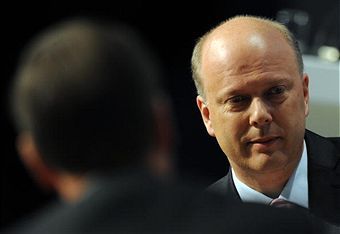 The New Statesman’s George Eaton admonishes Chris Grayling repeating his ‘false claim that violent crime has risen dramatically under Labour.’ Eaton cites the British Crime Survey’s findings that violent crime has fallen by 41 percent since 1997. True, the BCS asserts that violent crime has fallen since 1997. Changes in recording practice in 2002-03 mean that comparing current statistics with those compiled a decade ago is inherently inaccurate – a point conceded by UK Statistics Agency head Sir Michael Scholar with regard to Grayling’s police statistics, but not the BCS’.
The New Statesman’s George Eaton admonishes Chris Grayling repeating his ‘false claim that violent crime has risen dramatically under Labour.’ Eaton cites the British Crime Survey’s findings that violent crime has fallen by 41 percent since 1997. True, the BCS asserts that violent crime has fallen since 1997. Changes in recording practice in 2002-03 mean that comparing current statistics with those compiled a decade ago is inherently inaccurate – a point conceded by UK Statistics Agency head Sir Michael Scholar with regard to Grayling’s police statistics, but not the BCS’.
The independent House of Commons Library gave a more accurate assessment, finding that violent crime rose from 618,417 to 887,942 last year, or 44 percent. Grayling is right to criticise the government’s obtuse statistical analysis. True to form he undermined his statistical point by embellishing it with a poetic perception that Britain seems a more violent place than before. But his point holds: the government is empirically disingenuous on this most important policy area.
UPDATE: A number of commenters point out that the recording procedures applied only to the police statistics, which I was not aware of so thank you. Still, the government is, if you excuse the pun, getting away with murder. I posted the below in response to George Eaton but reproduce it here:
Agreed that neither system is perfect, something I should have said in the original post, and it would preferable if the system was standardised. The British Crime Survey is just a survey, not a sufficient statistical record. Also, the BCS website devotes an entire chapter to how it has changed its methods since 1981, something that Sir Michael Scholar overlooked in his original rebuke of Grayling. Police records have their own shortcomings but it is very convenient for the UK Statistics Agency to overlook the fact that the government moved the goalposts after 2002.
The 2008 clarification on GBH is instructive because it did not sharpen the murky ill-definition between ‘affray’, ‘assault’ and ‘GBH’. The Commons report defined them as violent crimes – hence the ‘artificially’ inflated figures. It may be ridiculous to describe grabbing someone by the lapels in a bar as a violent crime, but until these figures are collected consistently and to a standard definition both sides of the argument can be equally disingenuous. In this specific instance, Grayling’s being pretty up front, certainly in comparison to the government and its agencies.






Comments